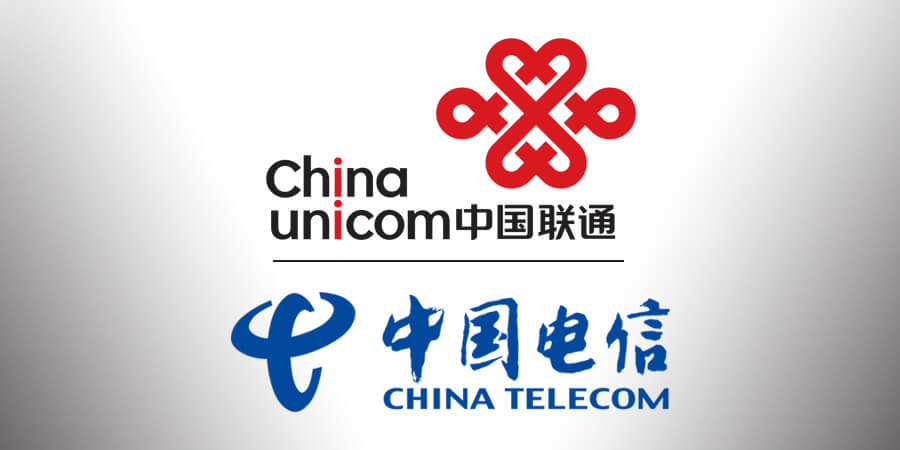To carry out the new development concept of “innovation, coordination, green, openness, and sharing”, and accelerate the construction of a nationwide 5G network with state-of-the-art technologies, high-quality, efficient operation, and global leadership, China Telecom and China Unicom have innovatively proposed to cooperate to build a 5G access network nationwide, with wide coverage, excellent technology, low investment, good perception, and supreme user experience.
Brand-new model of network sharing and co-construction: Region division construction, network sharing, leading technologies, and experience guarantee
China Unicom and China Telecom will maximize their respective resources through network sharing and co-construction. Firstly, China Unicom and China Telecom's 5G frequency bands are adjacent, only one set of equipment is needed to achieve 5G coverage. Secondly, the resources of the two companies are highly complementary in different regions of north China and south China. By building a nationwide 5G access network through cooperation, 5G network coverage can be efficiently achieved and 5G service capabilities can be quickly established. In the meantime, network co-construction will also provide useful reference for other operators worldwide.
Network sharing and co-construction will be promoted step by step. In the early stage, China Telecom and China Unicom will follow the basic principle: RAN sharing, bearer network connected and core network independent. Since SA terminal is not mature, in 2019, network sharing and co-construction under NSA network architecture is adopted. Starting from 2020, with gradual maturity of NSA / SA dual-mode terminal and 5GC, China Telecom and China Unicom will turn to network sharing and co-construction under SA network architecture, and introduce new technologies such as carrier aggregation, dynamic spectrum sharing, and TDD + FDD coordination to ensure network leadership. Finally, China Telecom and China Unicom will build an end-to-end controllable 5G sharing network with respective operation, effective monitoring, perceptual guarantee and business satisfaction.
Behind the vision of co-construction and sharing, there are higher requirements for equipment performance: ultra-broadband, high-power, transforming 4G frequency bands to 5G, etc. Facing a series of problems for equipment manufacturers, ZTE launched a full range of 5G products to support operators' network sharing and co-construction.
ZTE's secret sauce to salad of network sharing and co-construction: ultra-broadband, FAST (FDD assists super TDD)
According to the “Framework Agreement on Co-building and Co-sharing 5G Networks” reached by China Telecom and China Unicom, the two parties will jointly construct and share the 200MHz 5G band (3400MHz-3600MHz) at 3.5GHz, and share 2.1GHz frequency for 4G networks. With the gradual advancement of 5G networks, spectrum refarming will be an inevitable choice.
In response to the need of wider bandwidth coverage, ZTE has upgraded a full range of existing equipment. Firstly, in the 3.5GHz frequency band, a 200M wide-bandwidth, 320W high-power 64TR high-performance AAU is introduced. Secondly, a 2.1GHz 4TR RRU for remote areas has been introduced, with working bandwidth exceeding 50M. Other equipment, such as 8TR equipment suitable for high-speed rail, 4TR equipment suitable for blind and hot spot areas, and intelligent indoor equipment, have upgraded their operating bandwidth from 100M to 200M in the 3.5G frequency band, and the transmission power has been further improved.
To meet the 4G/5G spectrum sharing needs, ZTE has introduced DSS in FDD band, which is the dynamic sharing of 4G/5G spectrum. When there is a margin in LTE, NR is dynamically introduced, by upgrading the software of existing network equipment, FDD spectrum can be transformed to ensure a smooth transition from 4G to 5G. In addition, ZTE also broke TDD and FDD duplex modes, added time domain dimension, worked with China Telecom to implement the industry's first time-frequency dual aggregation solution, realized 4G/5G fully aggregation in the frequency and time domains, making the spectrum more efficient. The verification results showed that: in a good channel environment, the single user uplink rate can be increased by up to 40% compared to the 3.5GHz single carrier when using time division multiplexing CA and the maximum improvement can be up to 60% when using concurrent CA. At the same time, by using high and low frequency aggregation, the user downlink rate of the two schemes can be increased by 20% compared to the 3.5GHz single carrier.
World’s first 5G RAN sharing sites with continuous coverage in Hangzhou
Along with the advancement of network sharing and co-construction, ZTE responded quickly and launched the world's first 1.8G/2.1G/3.5G NSA RAN sharing commercial sites in Hangzhou with China Telecom and China Unicom, and took the lead in building real 5G commercial environment. The network capacity verification under the shared co-construction mode has actually measured a single user peak rate of 1.8Gbps and a drive test average rate of 1Gbps, which fully verifies that the existing 5G base stations have commercial capabilities for large-scale deployment.
Quick response and excellent test results were supported by ZTE's strong technical capabilities and reserves: ZTE has a deep accumulation of proprietary chips for communication equipment. The third-generation baseband and digital IF chips have achieved 7nm mass production and ZTE has started the pre-research of 5nm chip. In addition, ZTE is at the forefront of the industry in terms of dielectric filters, miniaturized antennas, and gallium nitride power amplifiers, ensuring the full competitiveness of 5G equipment. Finally, ZTE has platforms such as system simulation, link simulation, and performance optimization algorithms to ensure a better overall 5G system performance with quick response to various challenges in 5G commercial deployment.
At present, ZTE equipment which meets the high standards of network co-construction and sharing has been used in China Telecom and China Unicom's 5G Phase 2 test, and will be applied in 5G Phase 2 construction, In 2020, ZTE's full range of equipment will fully meet the evolution requirement to the ultimate 5G SA network target.





